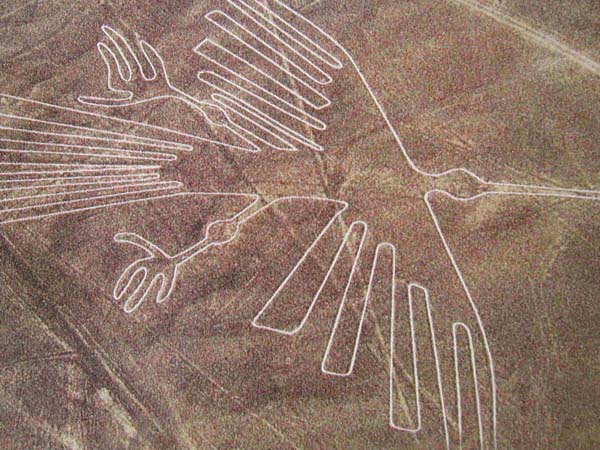By Elizabeth Leafloor | Red Ice Creations

A mining company has reportedly destroyed a portion of the world famous Nazca Lines, a World Heritage Site.
El Comercio, a Peruvian news publication, reported the destruction last month. The article stated that some of the ancient limestone lines had been destroyed by the mining company Gálveze during the creation of quarries to access the limestone in the area.
Apparently, the area in question is private property, but is also part of the Unesco ’Cultural Heritage of Humanity’ area created in 1994.
Discovered accidentally in 1927 by archaeologist Toribio Mejia Xesspe, the geoglyphs are located in the Nazca Desert in southern Peru. They are notably wide in spread, covering over 80 kilometres of a plateau. The figures depict geometric and natural motifs like squares, spirals, fish, hummingbirds, monkies, and lizards.
Their purpose remains unknown, but some researchers theorize the sigils were created so large because they were meant to be seen from the heavens.
Others speculate the lines are a series of walking labyrinths.
Many are outraged by the destruction of the lines, and locals are insisting officials account for the wreckage and stop the work on the surrounding land.
The provincial director of Culture of Nasca, Mario Olaechea Aquije, has said the land is privately owned and that the owner can work freely, without the authorities intervening.

The Regional Directorate of Culture of Ica (DCR) inspected the area on two occasions, and found that (translated) "there is permanent damage to a set of lines of varying length reaching between 60-120 and 150 meters long, and the disappearance of a trapezoid of almost 60 meters long."
Eduardo Herrán Gómez de la Torre, director of research at Ojos de Condor, said:
“The limestone firm responsible has not been sanctioned or supervised by the authorities of the Regional Directorate of Culture of Ica, despite being in this great archaeological reserve.”Source
“The company argues that the land where the plant is installed is private property and that the owner can do whatever he wants on his land, but this is not so,” he added.
The Nazca geoglyphs, though massive in spread, are delicate as they’re simply shallow channels that have been dug into the earth revealing the white limestone beneath. The lines have been preserved due to the area’s arid, windless climate and isolation.
However, historians, archaeologists and scientists worry for the fate of the lines as human expansion into the area increases. Squatters have been doing damage to the sites of late. Further, preservationists are "concerned about threats of pollution and erosion caused by deforestation in the region," (Source), potentially leaving the lines vulnerable to mudslides and flooding.
By Elizabeth Leafloor, Red Ice Creations
Sources:
ElComercio.pe
Wikipedia - Nazca Lines